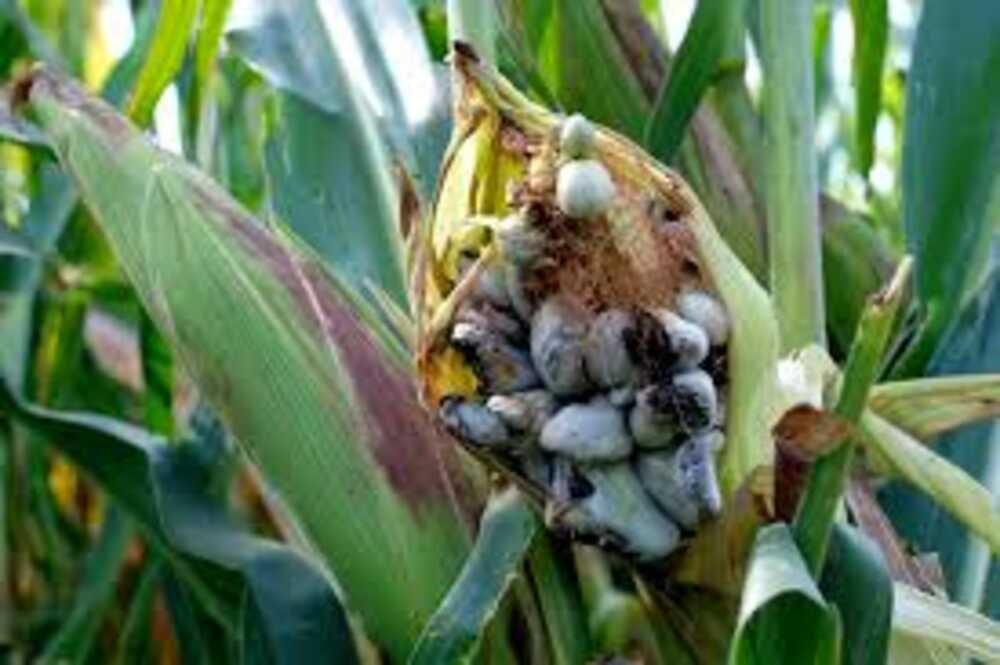Huitlacoche: Nature’s Gourmet Fungus You’ve Never Heard Of
What is Huitlacoche?
The term “huitlacoche animal” may raise eyebrows due to a misunderstanding in terminology, but it’s important to clarify that huitlacoche is not an animal. It is, in fact, a fungus that grows on corn, scientifically known as Ustilago maydis. Despite being sometimes referred to in folk conversations as an “animal” due to its black, bulbous appearance and the Aztec roots of the name, huitlacoche has no connection to the animal kingdom. The confusion may stem from the Nahuatl language, where indigenous terms often blend metaphors of nature. Huitlacoche is also known by other names such as corn smut and the Mexican truffle, the latter due to its prized status in gourmet cuisine.
This fungus infects corn kernels, causing them to swell into grey, mushroom-like galls. While considered a disease by many farmers in the U.S., in Mexico, huitlacoche is a culinary delicacy celebrated for its earthy, umami-rich flavor. The phenomenon has fascinated botanists, chefs, and food lovers alike for its transformation from a crop blight to a gourmet treasure.
Huitlacoche vs. Corn: Understanding the Relationship
Huitlacoche forms when the Ustilago maydis fungus invades the kernels of a corn plant, disrupting the grain’s normal development. This infection causes dramatic swelling of the kernels, turning them into spongy, smoky-flavored masses. Although some might panic at the sight of infected corn, in Mexico, farmers often see it as a blessing.
The growth of huitlacoche can occur naturally, especially in humid and rainy seasons, but some farmers now cultivate it intentionally due to its high demand in gourmet food circles. This intentional inoculation process involves spraying corn with the fungus under controlled conditions to ensure quality yield.
Whether huitlacoche is harmful or beneficial depends on perspective. Agriculturally, it reduces corn production per plant, but economically, its gourmet status can fetch prices several times higher than that of regular corn. It turns an otherwise “ruined” crop into a premium ingredient for upscale markets.
Cultural Roots: Huitlacoche in Mexican History
Huitlacoche is deeply embedded in Mexican culinary and cultural history, dating back to pre-Columbian times. The Aztecs not only consumed huitlacoche but also revered it as a symbol of natural transformation and richness. Its name derives from Nahuatl, with “cuitlacochin” possibly referring to “raven excrement,” likely referencing its dark color, though interpretations vary.
Historically, huitlacoche wasn’t just a food but part of ritual offerings and seasonal feasts. It represents a fusion of survival and luxury—a fungal growth that becomes a seasonal delicacy. For centuries, rural Mexican communities have harvested it during the rainy season and passed down traditional recipes that are still in use today.
The resurgence of huitlacoche in modern culinary trends underscores a broader respect for indigenous knowledge systems, which long understood the value of what others dismissed as a blight.
Nutritional Value of Huitlacoche
Despite being a fungus, huitlacoche offers impressive nutritional benefits. It contains essential amino acids, particularly lysine, which corn lacks, making it a complete protein source when eaten together with maize. This balance is critical in diets that rely heavily on corn as a staple.
Huitlacoche is also rich in fiber, which aids digestion and promotes gut health. It contains vitamins such as niacin and vitamin C, as well as minerals like phosphorus, potassium, and magnesium. Its antioxidant properties have drawn interest for potential immune-boosting effects and overall health support.
Unlike many processed or synthetic superfoods, huitlacoche offers a natural and ancestral alternative that blends nourishment with cultural authenticity.
Culinary Delight: How to Cook with Huitlacoche
If you’ve never cooked with huitlacoche, imagine a cross between mushrooms and truffles with a smoky, earthy, and slightly sweet flavor. It’s soft yet robust, often turning a deep black when cooked. In Mexico, one of the most iconic preparations is huitlacoche quesadillas, where the fungus is sautéed with onions, garlic, and epazote before being stuffed into tortillas.
Huitlacoche also shines in soups, tamales, tacos, omelets, risotto, and even pasta sauces. Its bold flavor enhances both traditional and contemporary dishes. Because it is high in moisture, it’s usually cooked down to concentrate flavor and reduce its spongy texture.
To prepare huitlacoche, it’s best to gently sauté it with aromatics. It can be stored fresh for a few days, but it is also available canned or frozen, which retains most of its flavor and nutrients. Proper handling ensures you experience the full charm of its unique culinary offerings.
Where to Buy Huitlacoche Today
Finding huitlacoche depends on where you live. In Mexico, it’s readily available during the rainy season from June to September, often sold in local markets either fresh or canned. In the U.S. and Europe, canned huitlacoche is more readily available in Latin American grocery stores or online retailers.
Gourmet shops and specialty stores are increasingly stocking it due to rising demand. Some farmers’ markets may also feature fresh huitlacoche if there are Mexican growers or food artisans in the area. When purchasing, ensure it is labeled as “ready to eat” or “precooked,” especially if it is canned.
Although once a niche product, huitlacoche is gaining popularity among chefs and food enthusiasts seeking rare ingredients with a rich cultural narrative.
Farming and Economic Impact
In regions where corn is a staple crop, huitlacoche presents both a challenge and an opportunity. In the United States, corn smut is typically regarded as a destructive pathogen. Yet, in Mexico, farmers increasingly view it as an asset. With proper management, a cornfield can be transformed into a fungal cash crop.
The economic value of huitlacoche is significant—it can sell for up to 10 times more than corn. This has encouraged the use of controlled inoculation techniques in both small-scale farms and university research centers interested in bio-agriculture.
The rise in demand has helped some farmers diversify their income and preserve cultural agriculture practices that prioritize biodiversity over monoculture.
Huitlacoche Around the World
From the backroads of Oaxaca to the menus of Michelin-starred restaurants, huitlacoche has gone global. Chefs from Spain, the U.S., Japan, and France are embracing this once-overlooked fungus and presenting it in haute cuisine.
In Europe and North America, huitlacoche is now seen as a novel ingredient, often compared to truffles or morel mushrooms. Its umami profile and dark color give dishes a mysterious and gourmet flair.
It has also been featured at food expos, culinary festivals, and farm-to-table events, where its transformation story from “plant disease” to “superfood” resonates with audiences seeking sustainable, story-rich foods.
Common Myths About Huitlacoche
Many people mistakenly believe huitlacoche is unsafe or inedible due to its appearance. In truth, it is entirely safe and has been eaten for centuries. Another myth is that it’s a type of animal or meat substitute—likely due to the search term “huitlacoche animal”—but this is inaccurate. It is a plant fungus, much like a mushroom, and contains no animal products.
Others assume it tastes bad or has a rotten smell. When appropriately prepared, huitlacoche has a deep, mushroom-like aroma and an earthy, pleasant taste. Its dramatic black color might surprise first-timers, but it’s part of the appeal.
Clarifying these myths helps open the door for more people to enjoy this unique delicacy with confidence and curiosity.
Final Thoughts: Why You Should Try Huitlacoche
Huitlacoche is more than just a fungus; it is a culinary adventure, a nutritional powerhouse, and a cultural emblem. It represents the wisdom of indigenous farming, the creativity of Mexican cooking, and the evolving global palate that embraces complexity and authenticity.
If you’ve never tasted it, now is the perfect time to start. With availability expanding and chefs crafting stunning new recipes, huitlacoche is stepping into the spotlight. Whether you call it corn smut, Mexican truffle, or even search it as “huitlacoche animal,” what you’ll find is a fascinating ingredient that challenges perceptions and rewards the curious.
So go ahead—try huitlacoche, and discover why this once-feared fungus is now a star on the world’s culinary stage.
Also read interesting topics at Buzztimes


